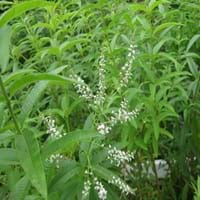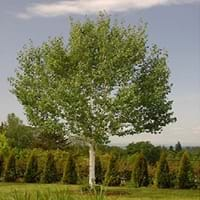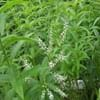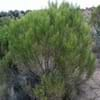Life Span
Perennial
Perennial
Origin
Argentina, Chile
India, Nepal, China
Types
Aloysia arequipensis,Aloysia brasiliensis,Aloysia barbata
Not Available
Number of Varieties
Not Available
Habitat
Roadsides, Scrubs
Mountains
USDA Hardiness Zone
8-11
5-7
Sunset Zone
Not Available
3a, 3b, 4, 5, 6, 7, 8, 9, 10, 11, 14, 15, 16, 17
Habit
Spreading
Pyramidal
Minimum Height
Not Available
Minimum Width
Not Available
Flower Color
White
Tan, Brown
Flower Color Modifier
Not Available
Bicolor
Fruit Color
Brownish Red
Not Available
Leaf Color in Spring
Green
Yellow green
Leaf Color in Summer
Green
Dark Green
Leaf Color in Fall
Green
Yellow
Leaf Color in Winter
Not Available
Not Available
Leaf Shape
Lance shaped
Cordiform
Plant Season
Spring, Summer, Fall
Spring, Summer, Fall, Winter
Sunlight
Full Sun, Partial Sun
Full Sun, Partial Sun
Growth Rate
Medium
Medium
Type of Soil
Clay, Loam
Loam, Sand
The pH of Soil
Neutral, Alkaline
Acidic, Neutral
Soil Drainage
Well drained
Average
Bloom Time
Late Summer
Early Spring
Tolerances
Not Available
Not Available
Where to Plant?
Ground, Pot
Ground
How to Plant?
Seedlings, Stem Planting
Grafting, Stem Cutting
Plant Maintenance
Medium
Medium
Watering Requirements
Requires regular watering
Requires watering in the growing season
In Summer
Lots of watering
Average Water
In Spring
Moderate
Moderate
In Winter
Average Water
Average Water
Soil pH
Neutral, Alkaline
Acidic, Neutral
Soil Type
Clay, Loam
Loam, Sand
Soil Drainage Capacity
Well drained
Average
Sun Exposure
Full Sun, Partial Sun
Full Sun, Partial Sun
Pruning
Remove damaged leaves, Remove dead branches, Remove dead leaves
Remove damaged leaves, Remove dead branches, Remove dead leaves
Fertilizers
All-Purpose Liquid Fertilizer
Fertilize in early spring, Fertilize in late fall, slow-release fertilizers
Pests and Diseases
Insects, Red blotch
Honey fungus, Leaves with brown tip, Phytophthora Root Rot, Powdery mildew, Verticillium Wilt
Plant Tolerance
Drought
Dry Conditions, waterlogging, Wet Site
Flowers
Insignificant
Insignificant
Flower Petal Number
Single
Not Available
Foliage Texture
Coarse
Medium
Foliage Sheen
Glossy
Matte
Attracts
Not Available
Not Available
Allergy
Skin irritation
Not Available
Aesthetic Uses
Not Available
Not Used For Aesthetic Purpose
Beauty Benefits
Not Available
Weightloss
Environmental Uses
Air purification
Air purification
Medicinal Uses
Antispasmodic, Febrifuge
anti-cancer, anti-inflammatory, antimicrobial, Antioxidants, Antiseptic, Carminative
Part of Plant Used
Leaves
Bark, Leaves
Other Uses
Repellent, Used as an insecticide
Used in construction, Wood is used in construction
Used As Indoor Plant
No
No
Used As Outdoor Plant
Yes
Yes
Garden Design
Container, Herb, Vegetable, Mixed Border
Feature Plant, Shade Trees
Botanical Name
ALOYSIA triphylla
BETULA utilis
Common Name
Lemon Verbena, Lemon beebrush
Himalayan Birch
In Hindi
Lemon Verbena
हिमालय सन्टी
In German
Lemon Verbena
Himalaya-Birke
In French
Aloysia
bouleau de l'Himalaya
In Spanish
Aloysia triphylla
abedul del Himalaya
In Greek
Lemon Verbena
Himalayan σημύδας
In Portuguese
Aloysia triphylla
bétula Himalaia
In Polish
Lemon Verbena
Himalayan brzoza
In Latin
Lemon Verbena
Birch Himalayan
Phylum
Magnoliophyta
Tracheophyta
Class
Magnoliopsida
Magnoliopsida
Family
Verbenaceae
Betulaceae
Clade
Angiosperms, Asterids, Eudicots
Angiosperms, Eudicots, Rosids
Tribe
Not Available
Not Available
Subfamily
Not Available
Not Available
Number of Species
Not Available
Not Available
Difference Between Lemon Verbena and Himalayan Birch
If you are confused whether Lemon Verbena or Himalayan Birch are same, here are some features about those plants to help you choose better. Many people think that these two plants have the same characteristics, but one can see Lemon Verbena and Himalayan Birch Information and learn more about it. Fertilizers required for proper growth of Lemon Verbena are All-Purpose Liquid Fertilizer, whereas for Himalayan Birch fertilizers required are Fertilize in early spring, Fertilize in late fall and slow-release fertilizers. Hence, one should know the basic difference between Lemon Verbena and Himalayan Birch if you are planning to have them in your garden to enhance its beauty.
<
Flowering PlantsImportance of Lemon Verbena and Himalayan Birch
Want to have the most appropriate plant for your garden? You might want to know the importance of Lemon Verbena and Himalayan Birch. Basically, these two plants vary in many aspects. Compare Lemon Verbena and Himalayan Birch as they differ in many characteristics such as their life, care, benefits, facts, etc. Every gardener must at least have the slightest clue about the plants he wants to plant in his garden. Compare their benefits, which differ in many ways like facts and uses. The medicinal use of Lemon Verbena is Antispasmodic and Febrifuge whereas of Himalayan Birch is anti-cancer, anti-inflammatory, antimicrobial, Antioxidants, Antiseptic and Carminative. Lemon Verbena has beauty benefits as follows: Not Available while Himalayan Birch has beauty benefits as follows: Not Available.
Compare Facts of Lemon Verbena vs Himalayan Birch
How to choose the best garden plant for your garden depending upon its facts? Here garden plant comparison will help you to solve this query. Compare the facts of Lemon Verbena vs Himalayan Birch and know which one to choose. As garden plants have benefits and other uses, allergy is also a major drawback of plants for some people. Allergic reactions of Lemon Verbena are Skin irritation whereas of Himalayan Birch have Not Available respectively. Having a fruit bearing plant in your garden can be a plus point of your garden. Lemon Verbena has no showy fruits and Himalayan Birch has no showy fruits. Also Lemon Verbena is not flowering and Himalayan Birch is not flowering . You can compare Lemon Verbena and Himalayan Birch facts and facts of other plants too.





